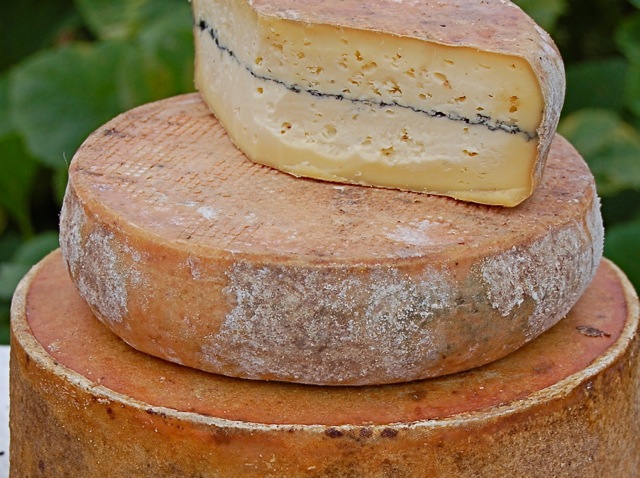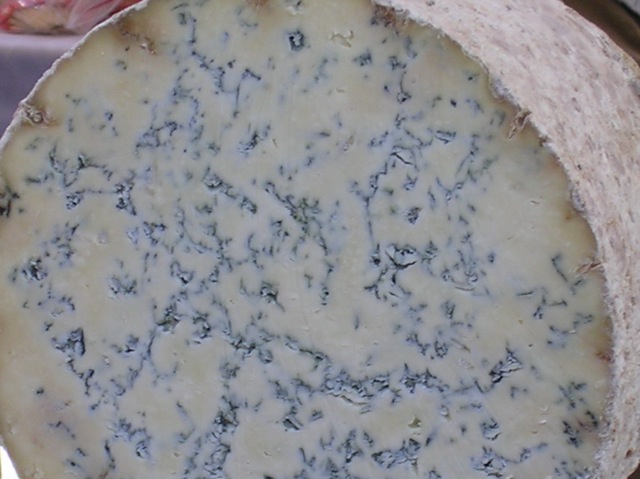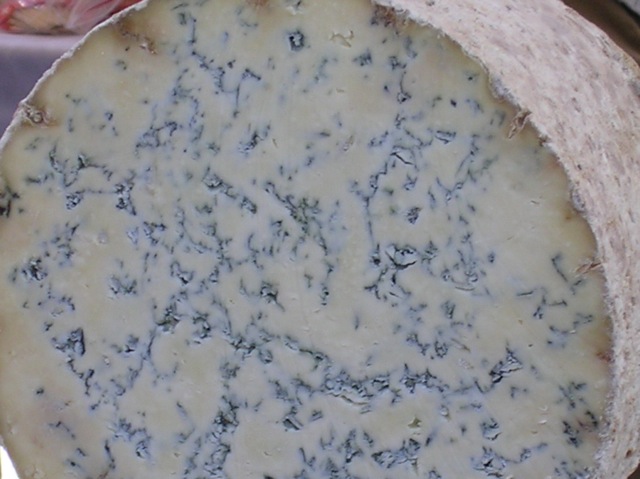
fresh, l
(article, Tami Parr)
[%pageBreakSettings nobreak=true] [%adInjectionSettings noInject=true] Any grocery store with a decent cheese section is usually stocked with scores of cheeses from around the globe, arranged by type, shape, and size. The sheer bounty can make cheese-buying feel like a complicated exercise in risk management. It’s easy to fall back on the quotidian cheeses snuggled in the dairy case next to the butter and sour cream: the familiar block cheddars, Monterey Jacks, and Jarlsbergs. But understanding cheese is really just a matter of learning a few basics. Armed with a bit of knowledge and a sense of exploration, you can transform your shopping trip into an enjoyable tour of the cheese regions of the world. Everybody has different tolerances for the flavors inherent in cheese; some folks love the salty earthiness of blue cheese, for example, while others can’t stand it. It’s good to try as many types of cheese as possible, but don’t feel as if you’ve somehow failed if you don’t like a particular one. Learn what cheeses you prefer by developing an understanding of a few general cheese categories. Cheeses within each category have basic similarities that you’ll start to recognize from cheese to cheese and even country to country. While this doesn’t mean that every cheddar or Brie will taste exactly the same, it will help you know what to expect. [%image fresh float=right width=350]Fresh Fresh cheeses are made with fresh milk and consumed immediately without aging; as a result, these cheeses are typically characterized by their mild dairy flavors. You may find these cheeses mixed with herbs, fruits, or honey. [[block(clear). ]] [%image soft float=right width=350]Soft ripened (“bloomy rind”) Cheeses with the characteristic white rind of a Brie or Camembert fall into the category of soft-ripened cheese. These cheeses are typically aged only minimally, up to 120 days at most. Cheesemakers encourage the growth of ripening molds on the outside of this type of cheese, which develop the cheese’s flavor profile. While eating the rind is not mandatory, some feel that it adds to the flavor experience. [[block(clear). ]] [%image "promo-image" float=right width=350]Washed rind (“stinky”) These cheeses — such as Taleggio, Raclette, and Morbier — start as soft-ripened cheeses and are then washed (often by hand) with a variety of substances, such as wine or beer; the washing encourages flavor-creating microbial growth. These cheeses are typically more savory and “meaty” than milder soft-ripened cheeses. [[block(clear). ]] [%image blue2 float=right width=350]Blue (“moldy”) Yes, the blue parts of cheese are actually mold. Cheesemakers add cultures to the milk, then encourage mold growth by poking air holes in the ripening cheese. Depending on the age of the blue cheese, its flavors may range from mildly blue to salty with a strong bite. A truly good blue cheese will have rich, earthy, complex undertones. [[block(clear). ]] [%image aged float=right width=350]Aged Many cheeses first distinguish themselves by their texture, which may range from semi-firm to very hard. A variety of processes are used to create these cheeses. Cheesemakers may wash, heat, and/or press the cheese curd during the cheesemaking process, then age the resulting cheese for up to a year or more. As a result of the concentrating effects of the aging process, the flavors of aged cheeses will tend to be more complex and developed than fresher cheeses. If you feel unsure about some of the other cheese groups listed above, this category is a good place to start exploring. [[block(clear). ]] [[block(sidebar). h1. Sampler platter [[block(smalltext). If you like fresh cheese, try soft chèvres. Dig the hard, aged, cheeses? Get a chunk of Mimolette or aged Gouda. Cheddar fans should sample the wide variety of British cheddars, while Brie lovers might cut a wedge of Italian Brescianella. And for blue cheese? Go all out with a Spanish Cabrales. And check out two recent books on cheese: Jeff Roberts' The Atlas of American Artisan Cheese and Laura Werlin's Laura Werlin's Cheese Essentials. ]] ]] Another way of thinking about cheese is to consider the milk that went into it. Cow's milk? Sheep's? Goat's? Or a mixture? (All of the above categories use a variety of different milks, depending on the cheese.) Some cheeses are made from raw (i.e., unpasteurized) milk, which some aficionados consider vital for flavor. Most cheeses sold in the U.S. are made from pasteurized milk. The preference is up to you. Try sampling all the cheeses within a category that sounds good to you, such as bloomy rind. Or go even narrower and pick a category slice, such as aged British cheddars. You might also select a country, such as Spain or France, and then try cheeses made in that particular country. Keep notes if you like, and see how your tastes change over the course of your cheese expeditions. Finally, don’t be afraid to ask questions. If your local grocery has a dedicated cheesemonger, he or she will usually be happy to allow you to sample a cheese or three before buying. Find a great cheesemonger, and you’ve made a friend for life. p(bio). Tami Parr keeps a blog called the Pacific Northwest Cheese Project. Also on Culinate: Kathleen Bauer on how to store cheese properly.

fresh, l

soft, l

promo-image, l

blue , l

aged, l

blue2, l

reference-image, l

feature-image, l